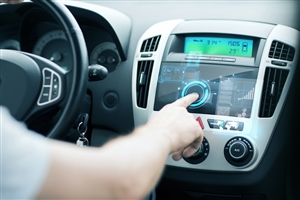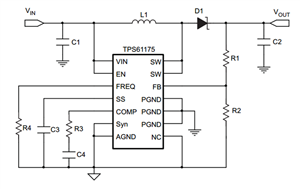The wide variety of automotive infotainment systems and functionality create many power requirements for boost converters. Some infotainment systems may not require one at all. One vehicle model may need a 12V car battery boosted to 24V for an audio amplifier. Another may need 18V to bias the display. A third may use light-emitting diodes (LEDs) and need a backlight driver. With all of these different requirements, wouldn’t you prefer to qualify just one integrated circuit (IC) instead of four or more?
The TPS61175-Q1 was designed for this reason – to support all of your boost converter needs. The wide 2.9V to 18V input range supports the variable supply voltage found in vehicles, while the -Q1 means that it’s Automotive Electronics Council (AEC)-Q100 qualified for high reliability in automotive systems.
The real advantage of the TPS61175-Q1 is its flexibility. It integrates the low-side n-type metal-oxide semiconductor (NMOS) transistor used in boost topologies, including single-ended primary-inductor converter (SEPIC) and flyback. These topologies are used when the input voltage varies both above and below the desired output voltage in the automotive system. This transistor is rated at 40V and 3A and supports very high output power such as 24VOUT at 1A. No extra printed circuit board (PCB) space is required for this transistor; it is integrated in the 5-mm x 4-mm package. The up to 38V output voltage and high output current allow it to be used for many different system rails. Figure 1 shows the complete schematic for a boost application.
The switching frequency is externally programmable beyond 2MHz to stay above the AM radio band. Synchronization to a clock is supported for more noise-sensitive applications. And both startup time and loop compensation are set externally by small passive components, which enable maximum application flexibility. For medium-power boost converter automotive applications, you need look no further.
For what other automotive applications do you need a boost converter?
Figure 1: The simplicity and integration in the TPS61175-Q1 allow it to be used for a wide variety of needs in automotive systems.

